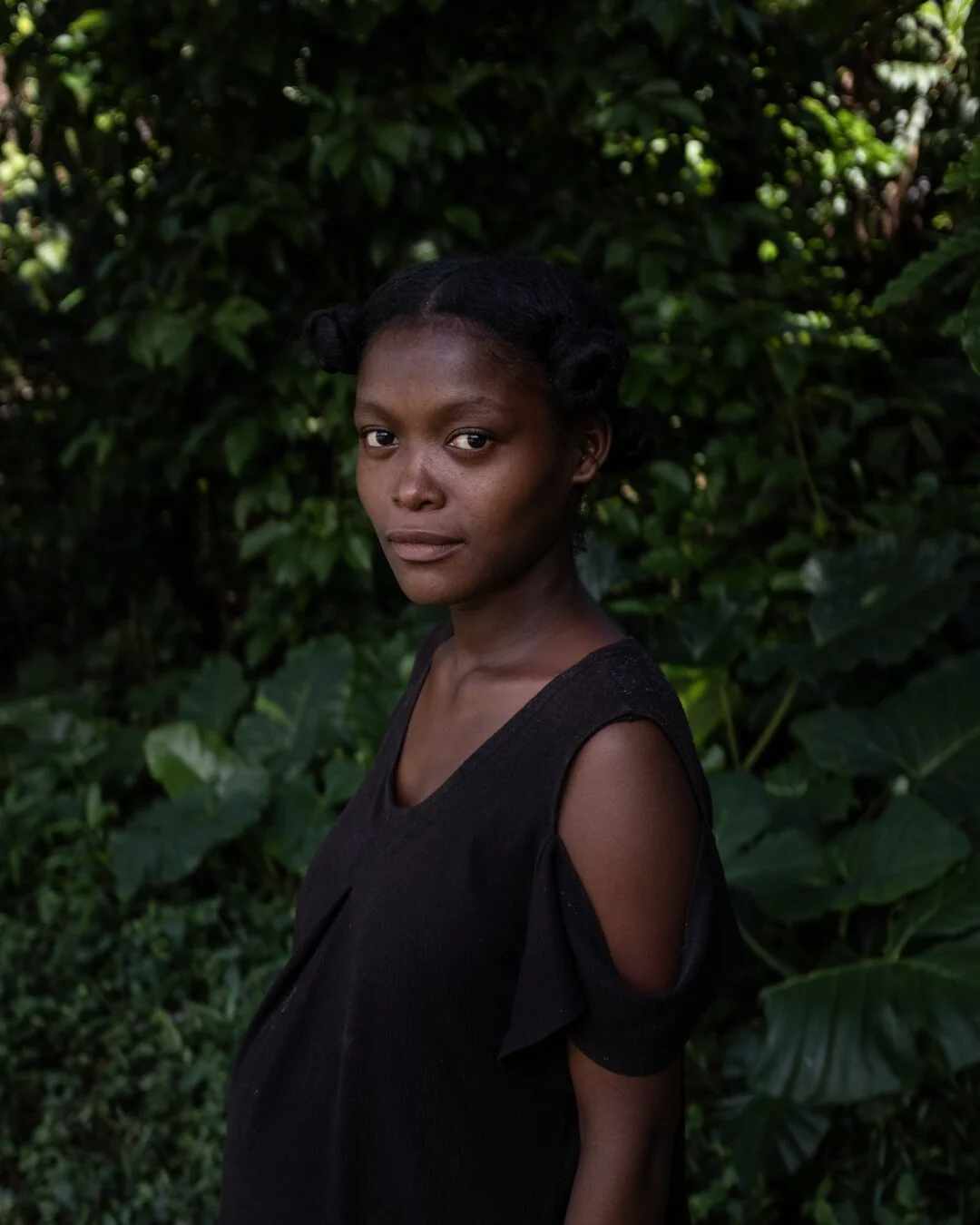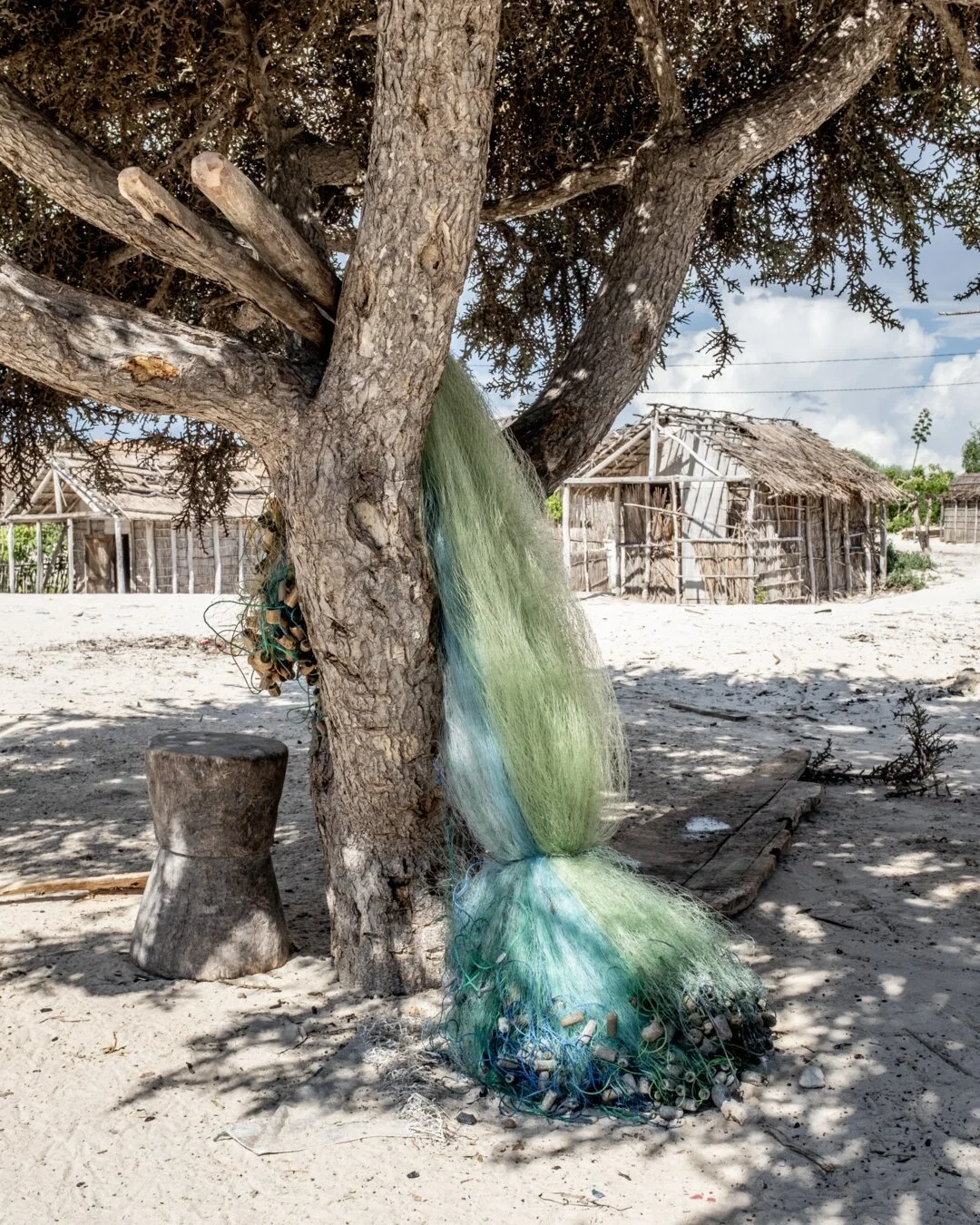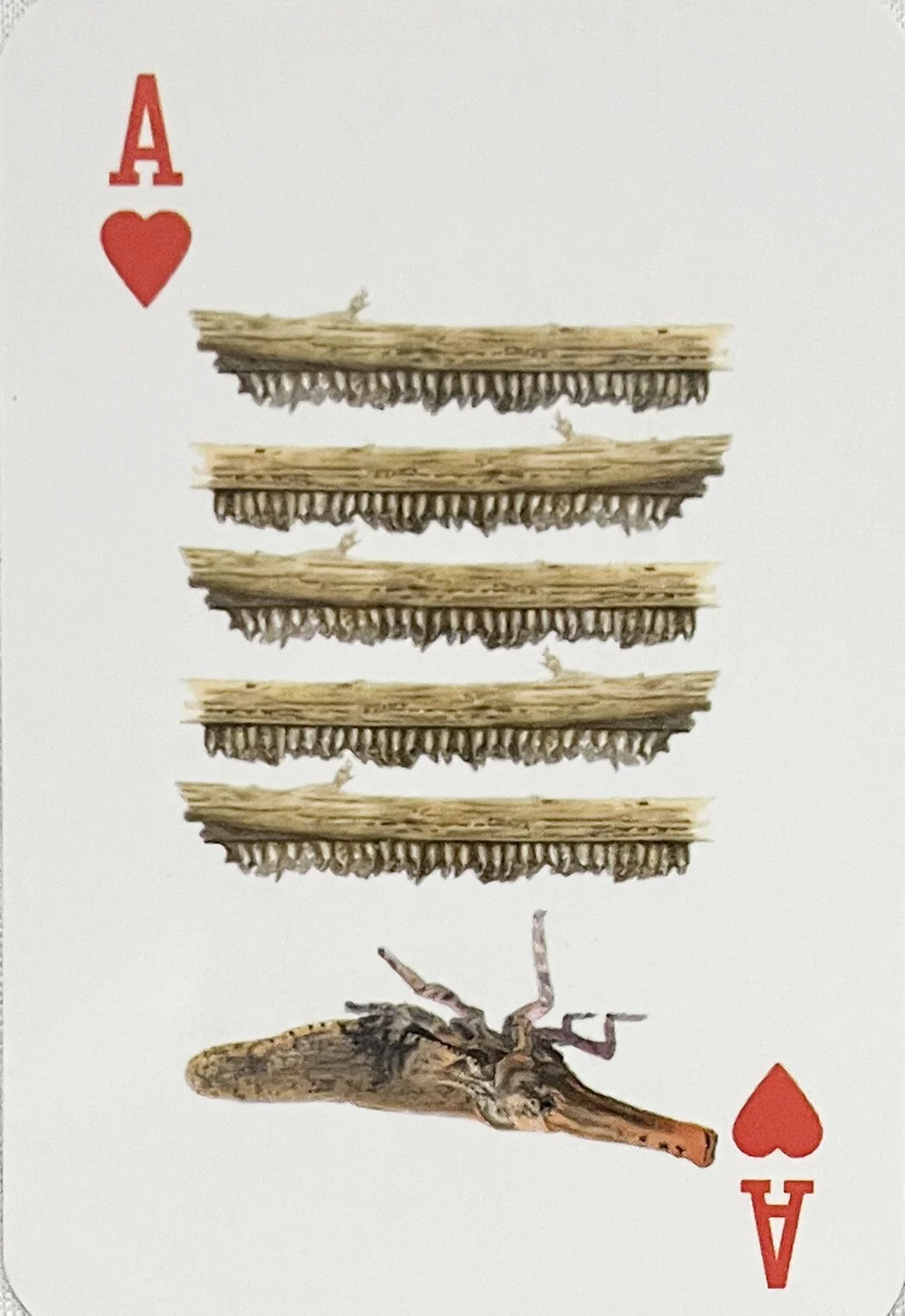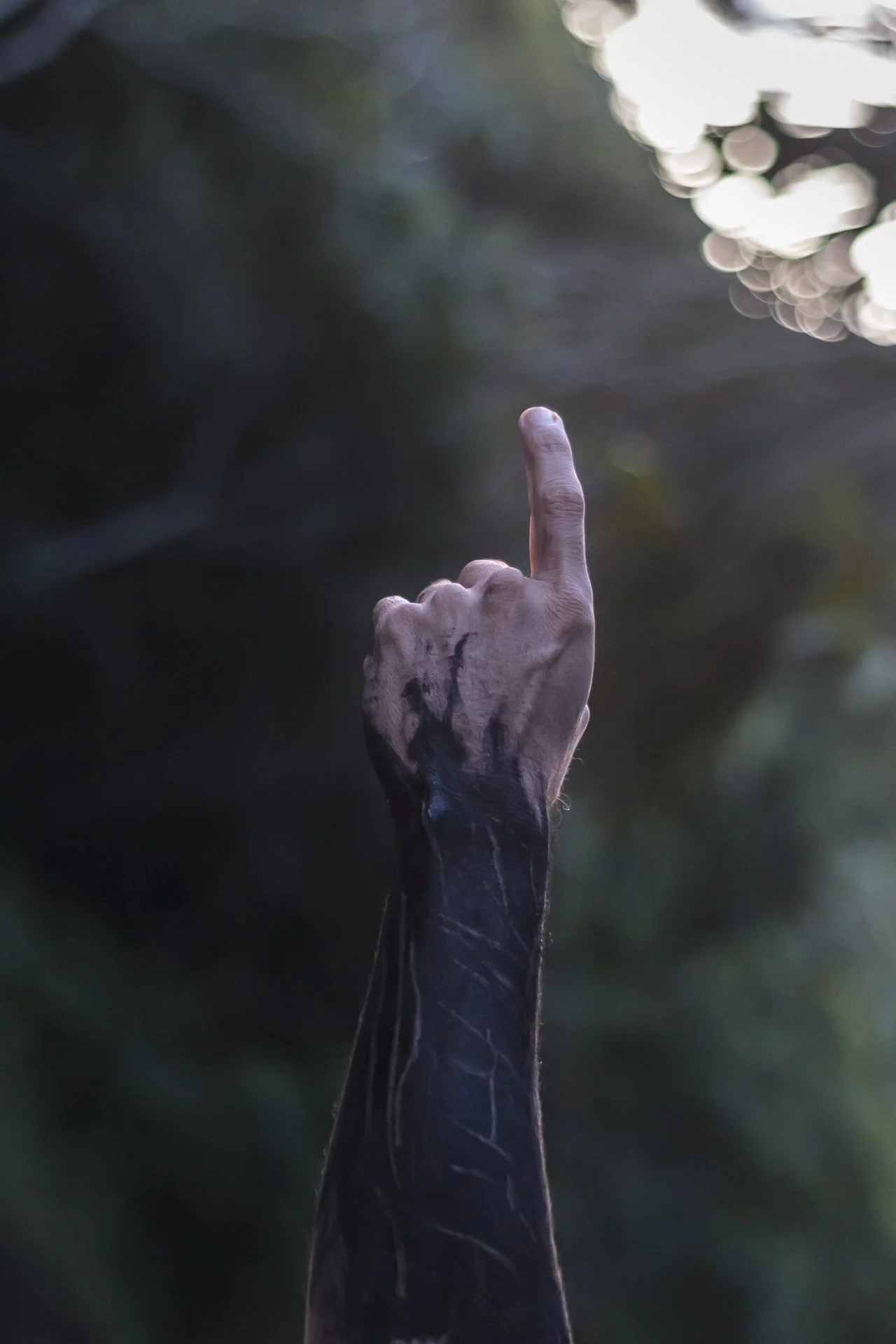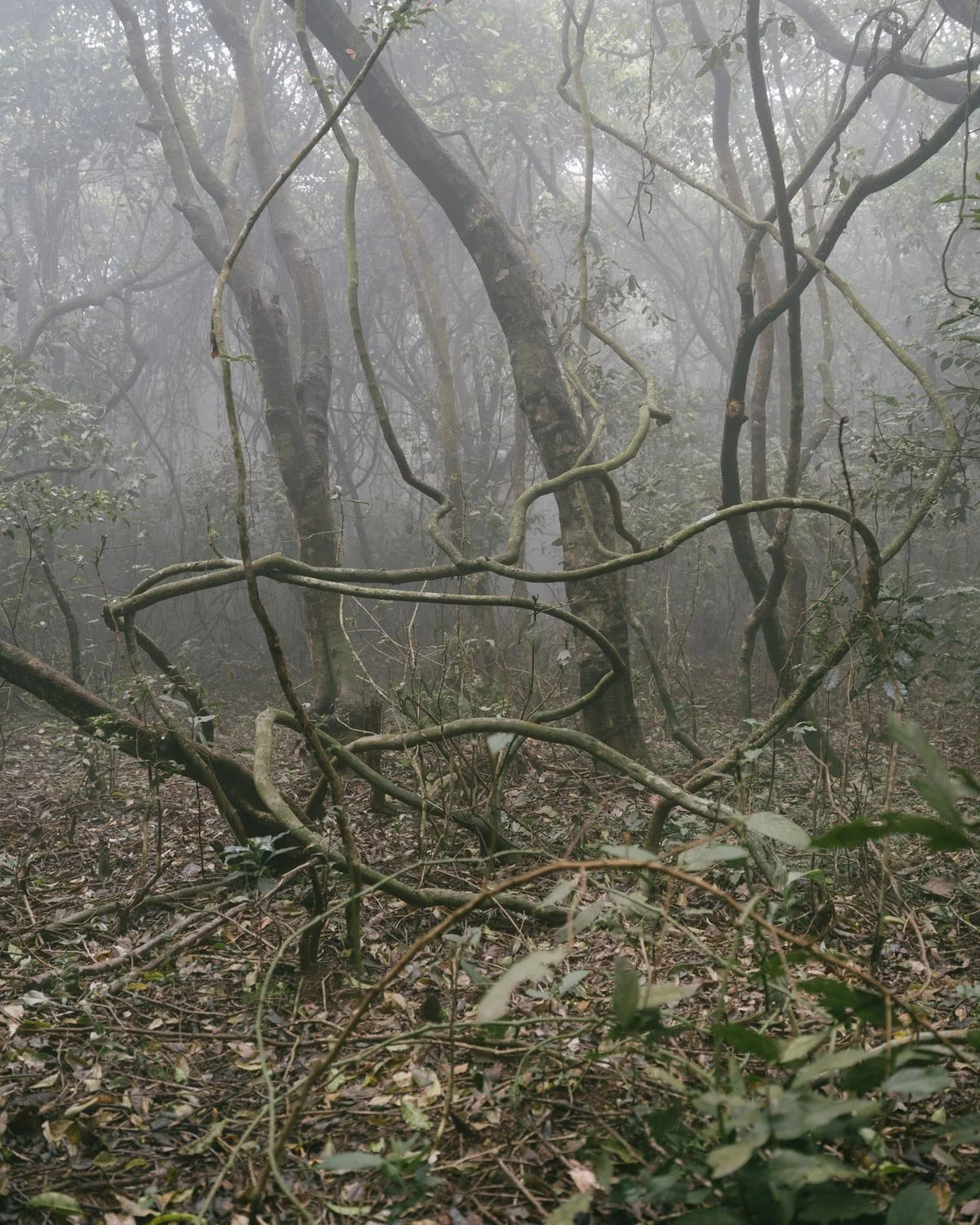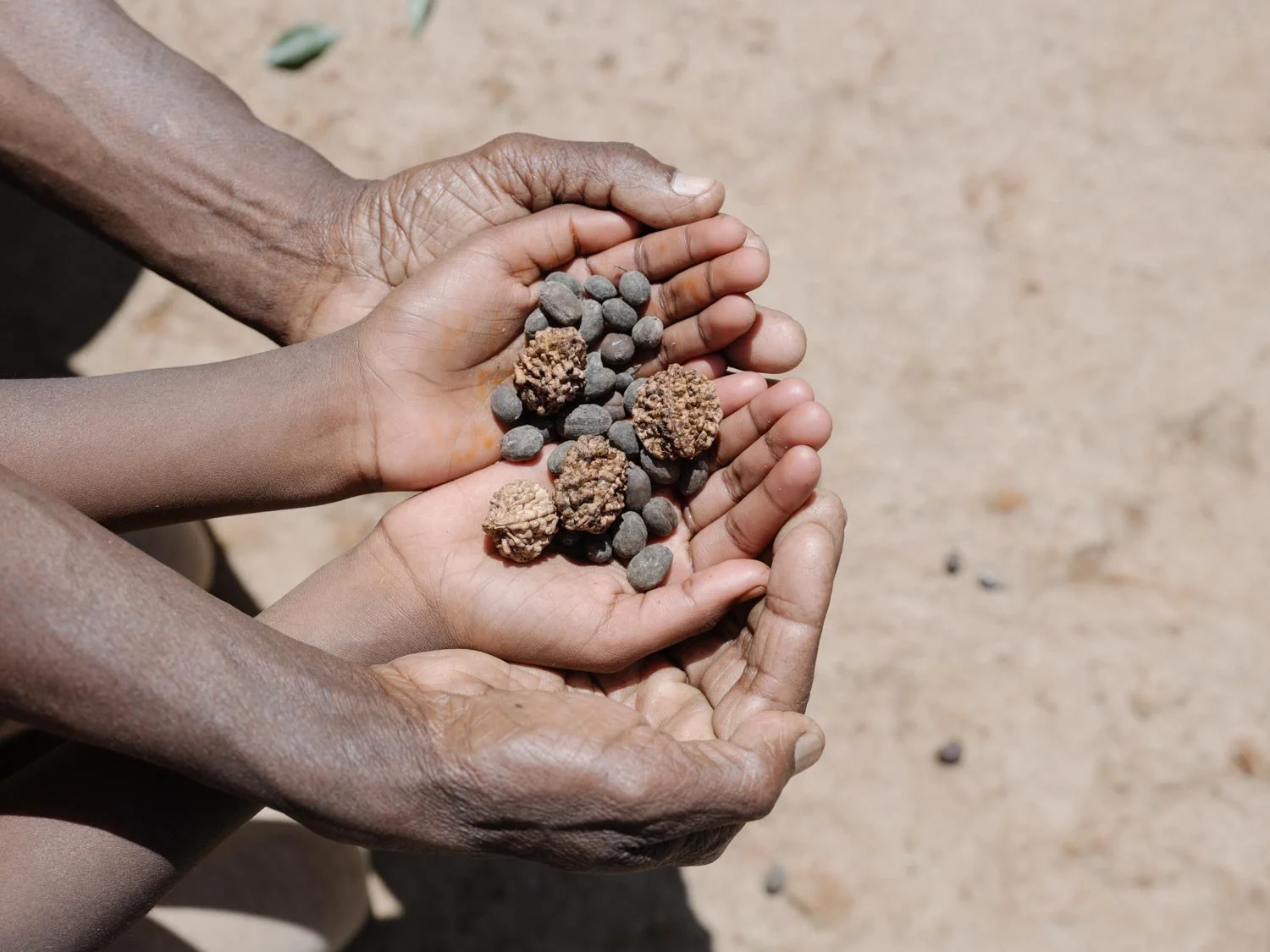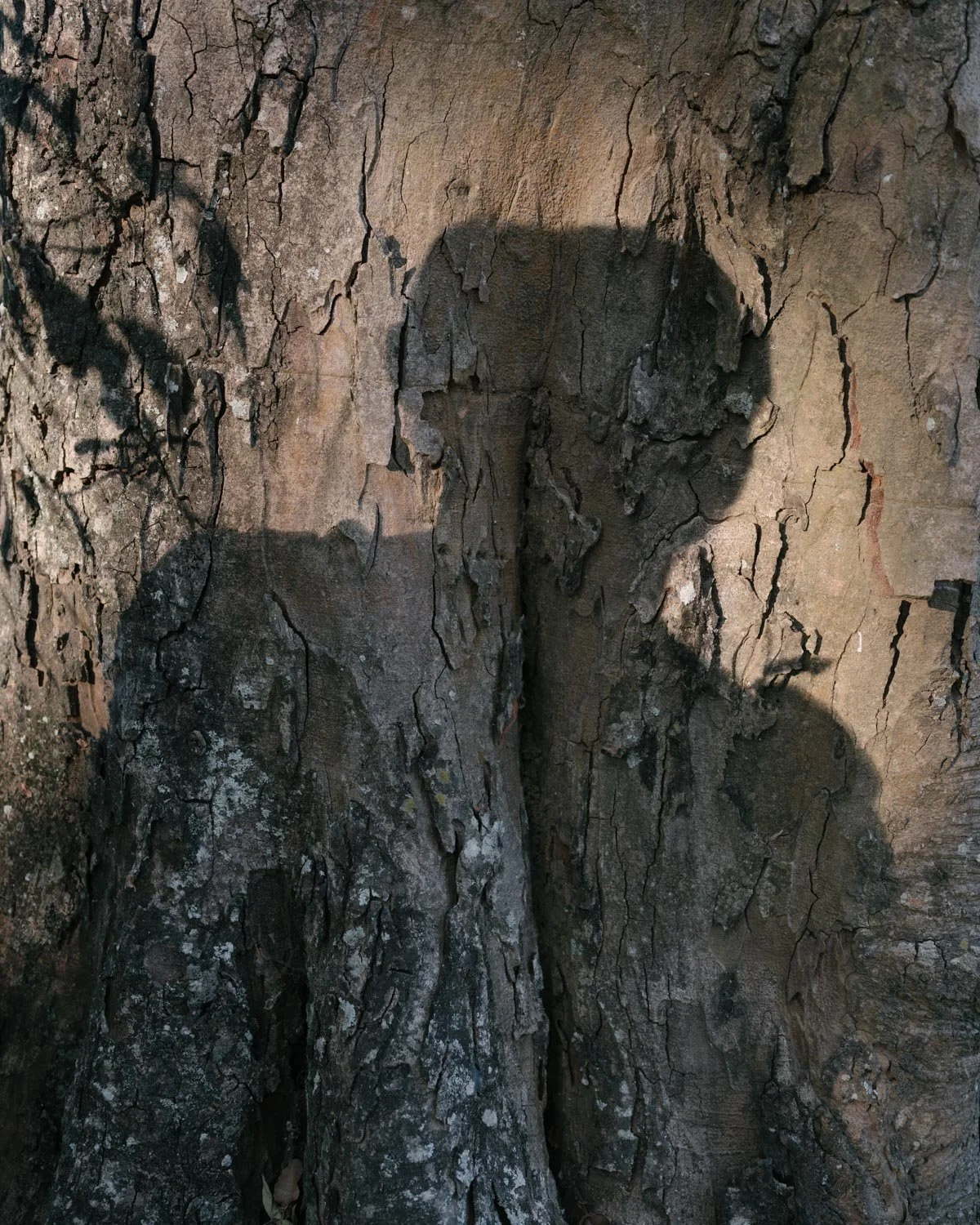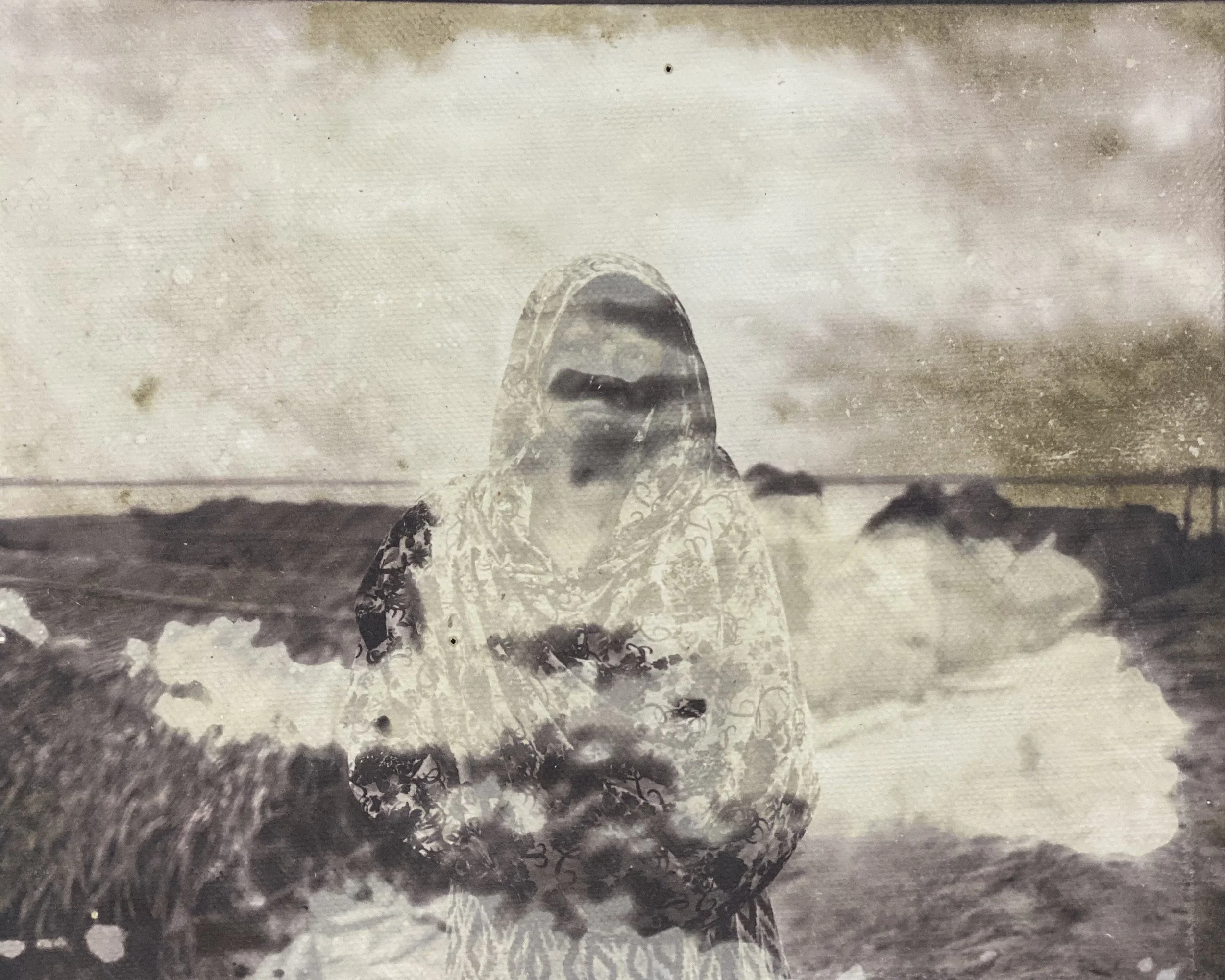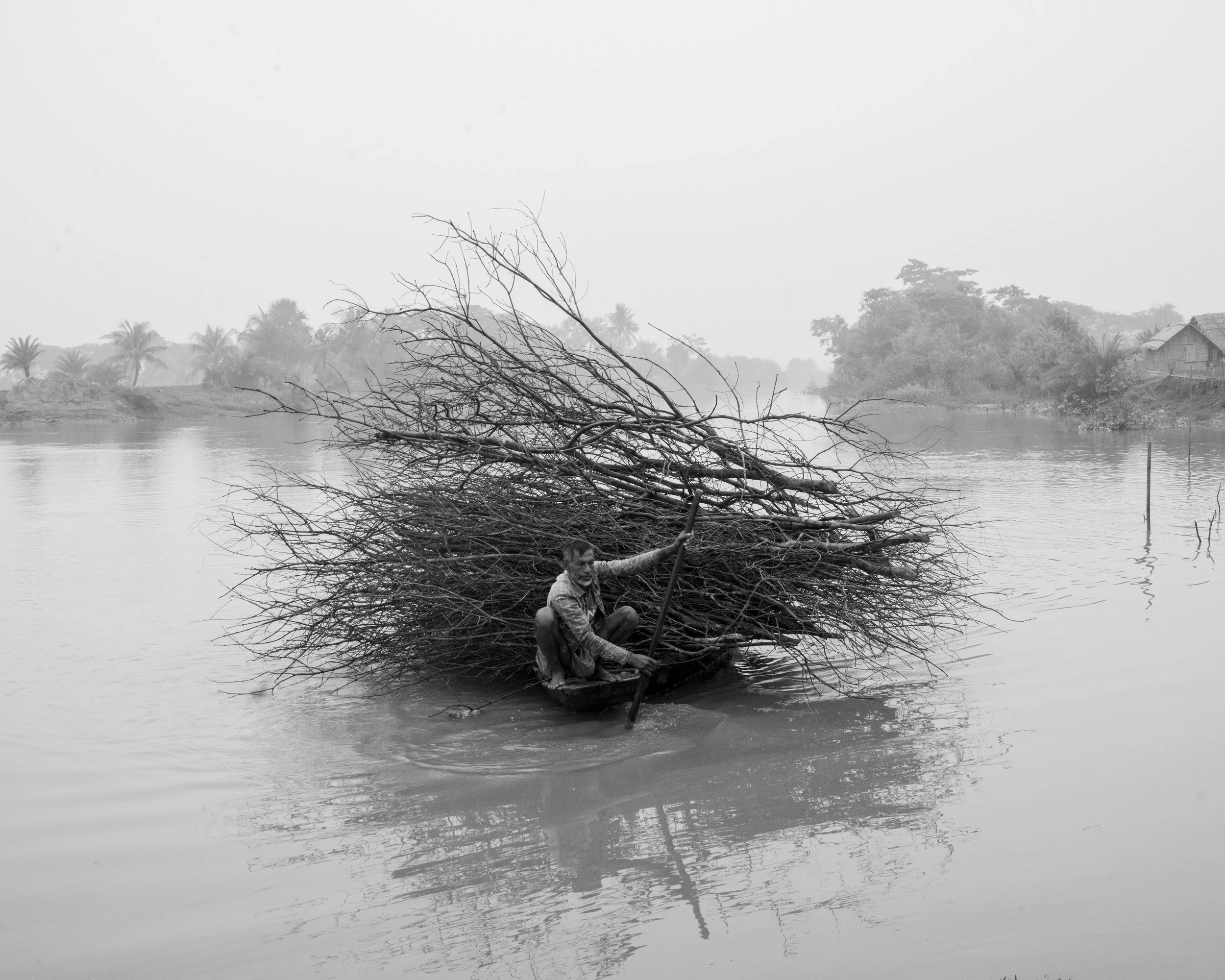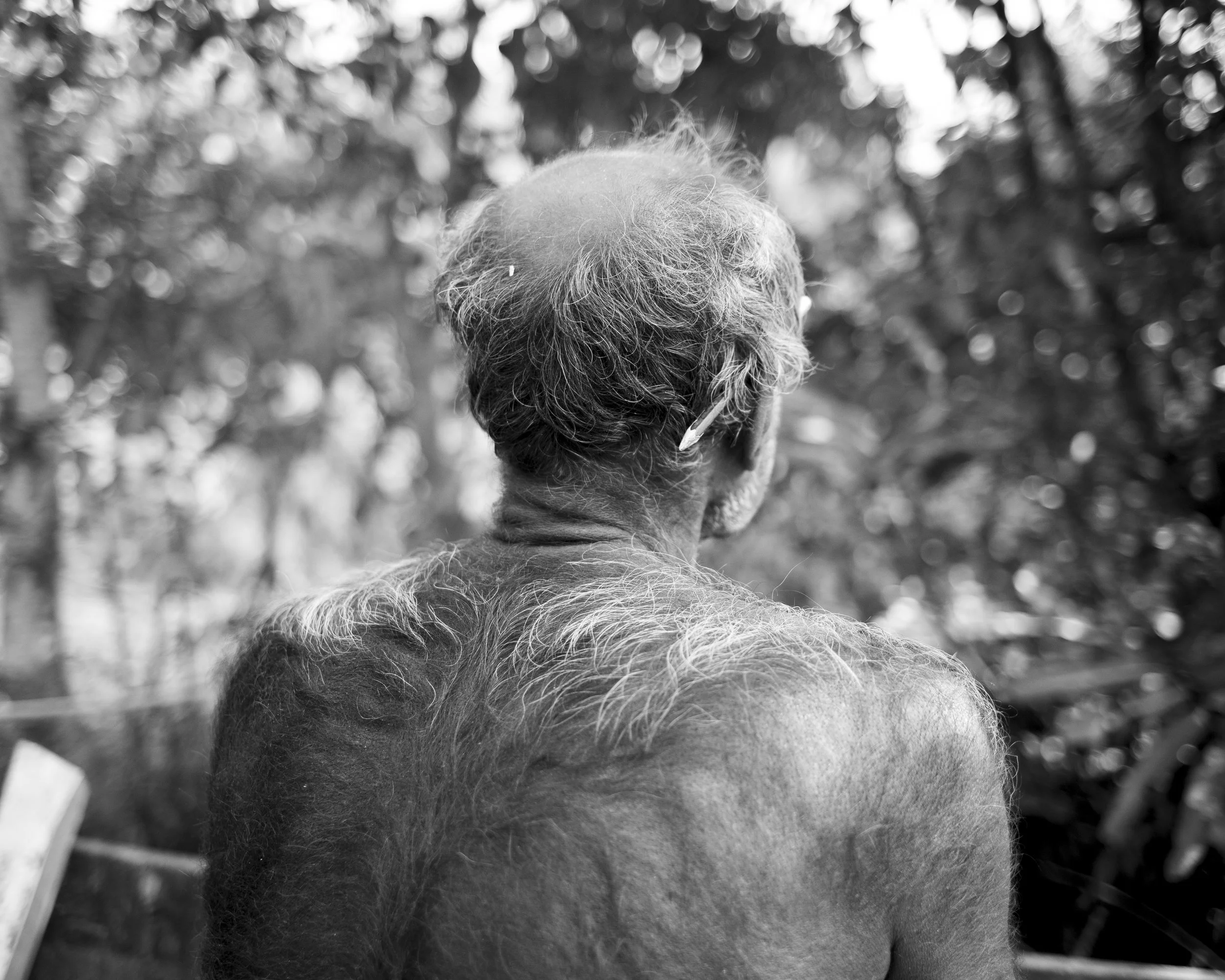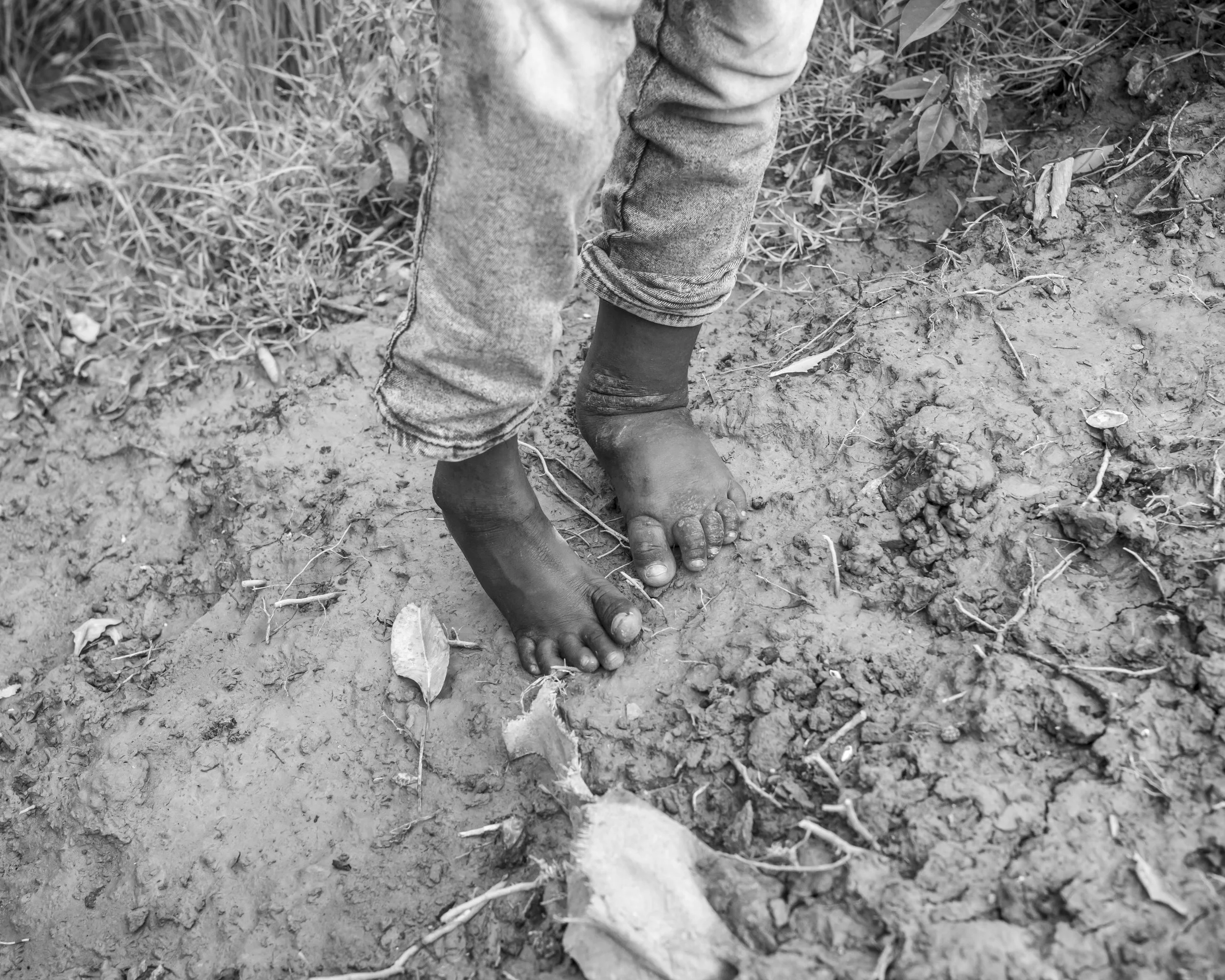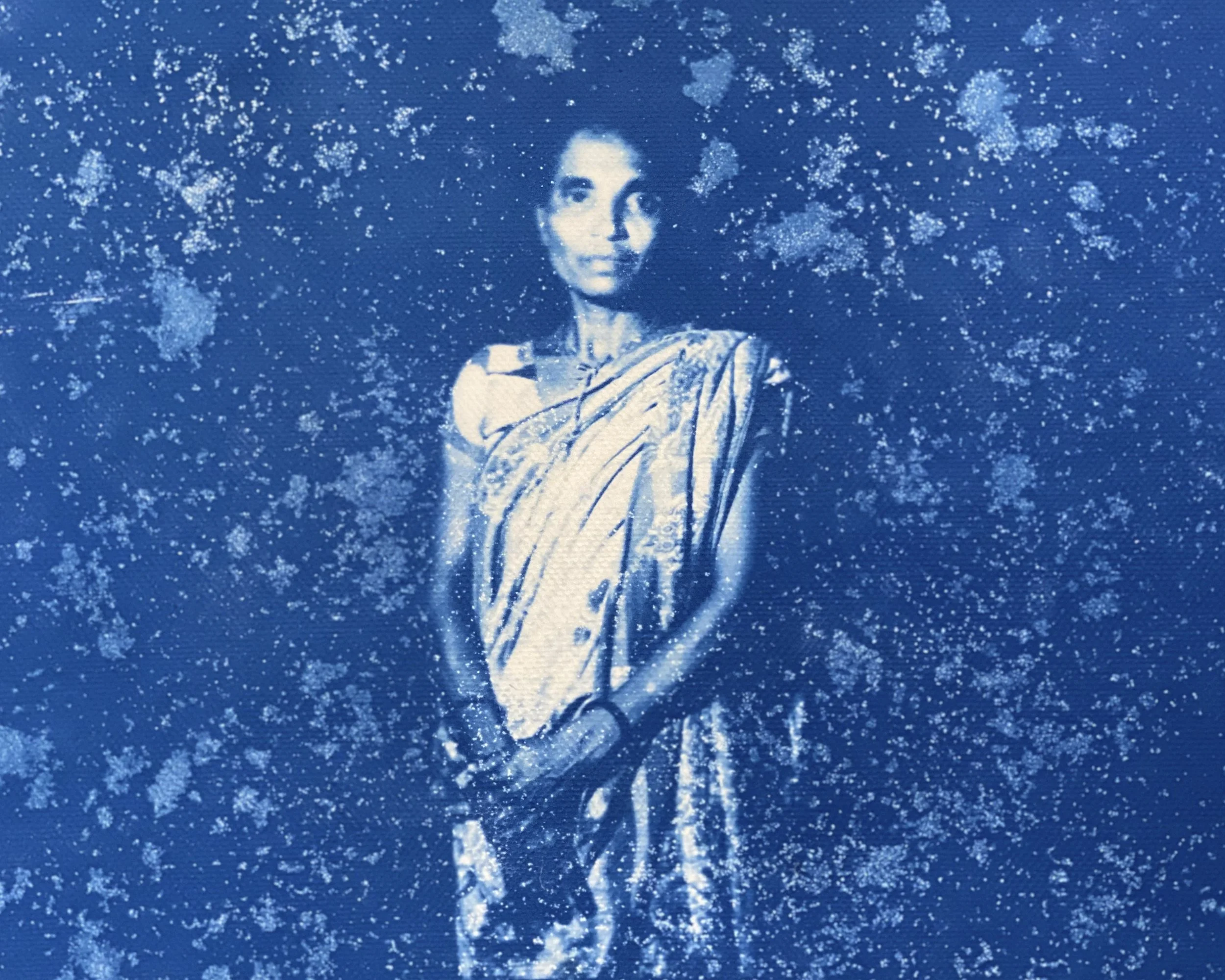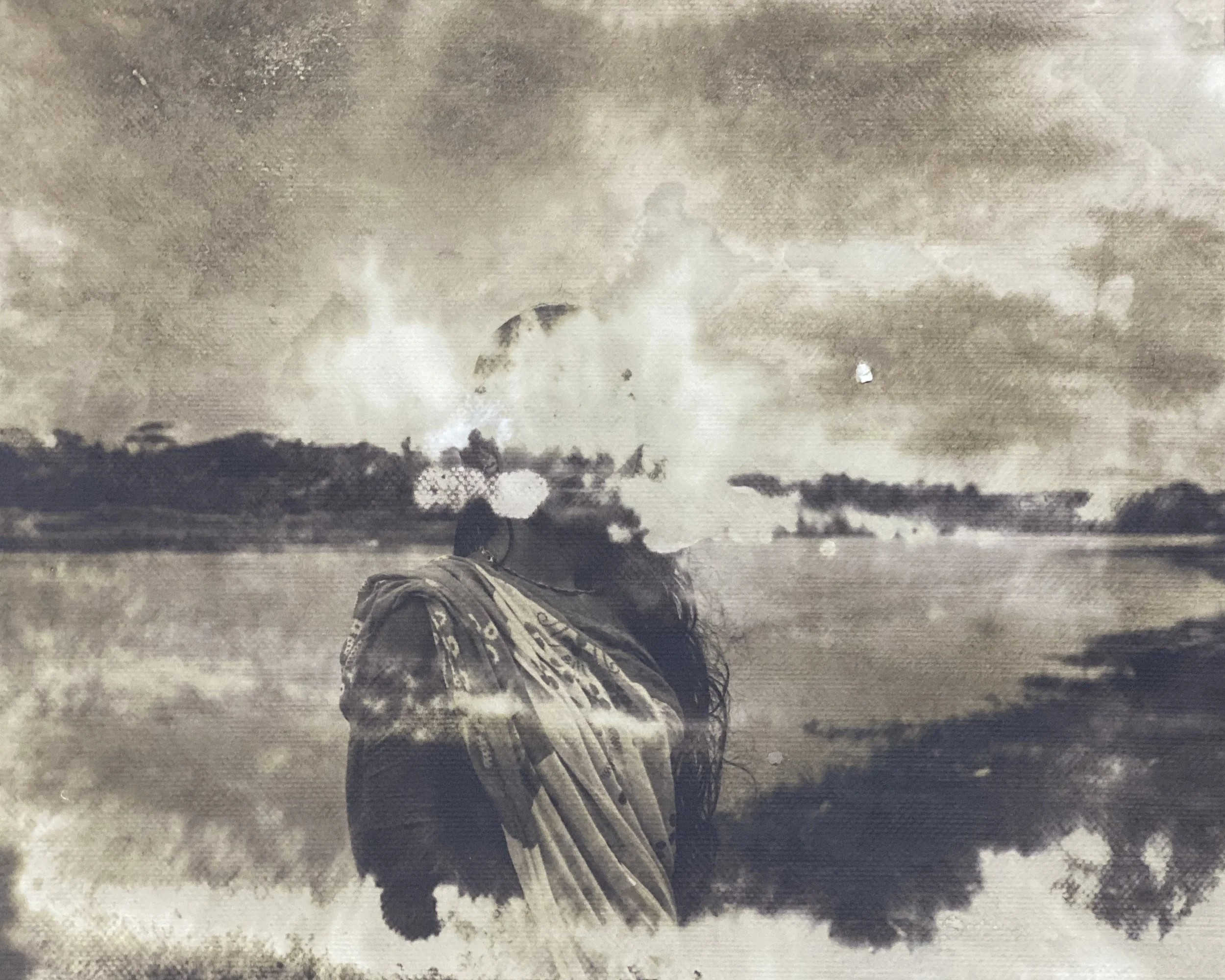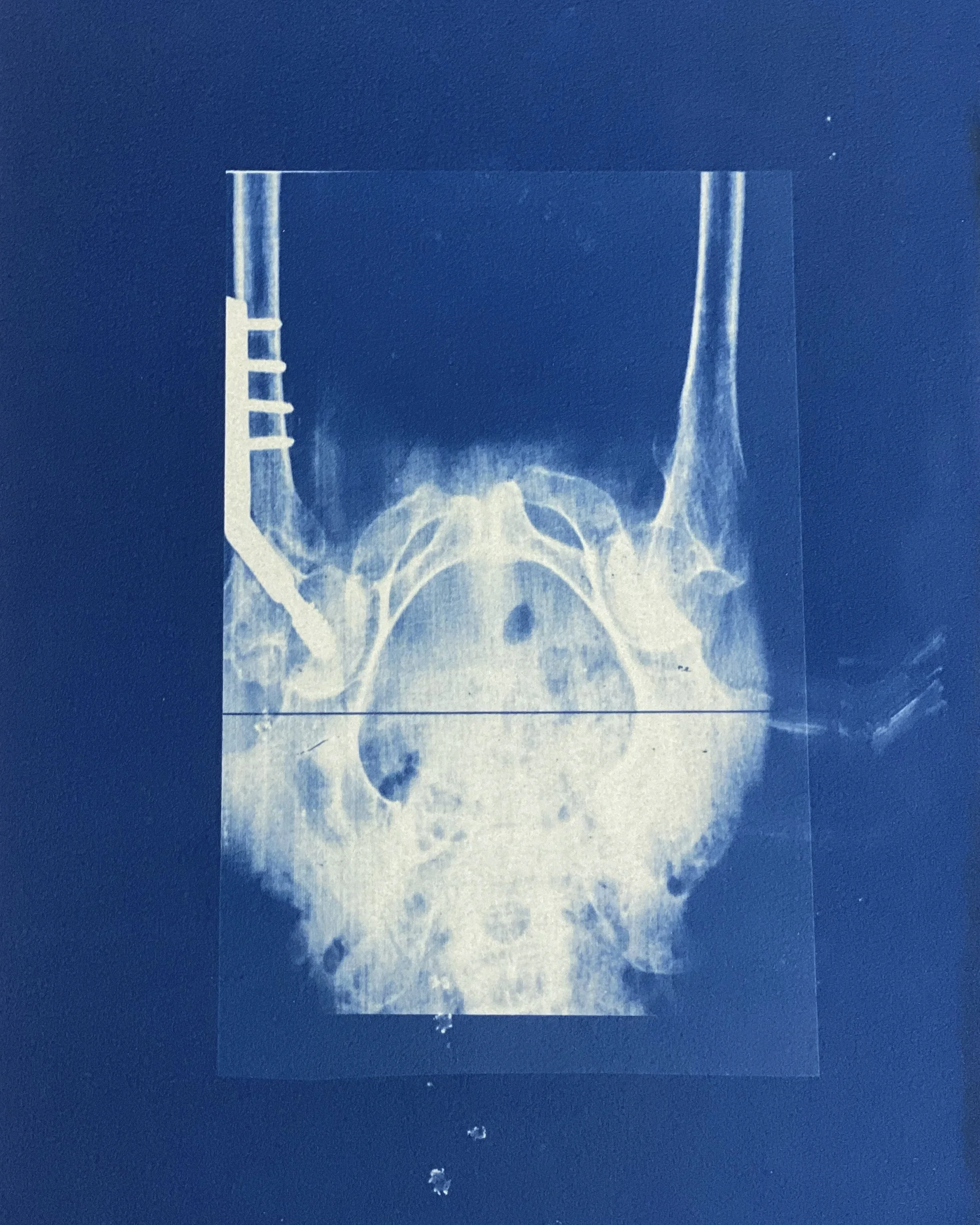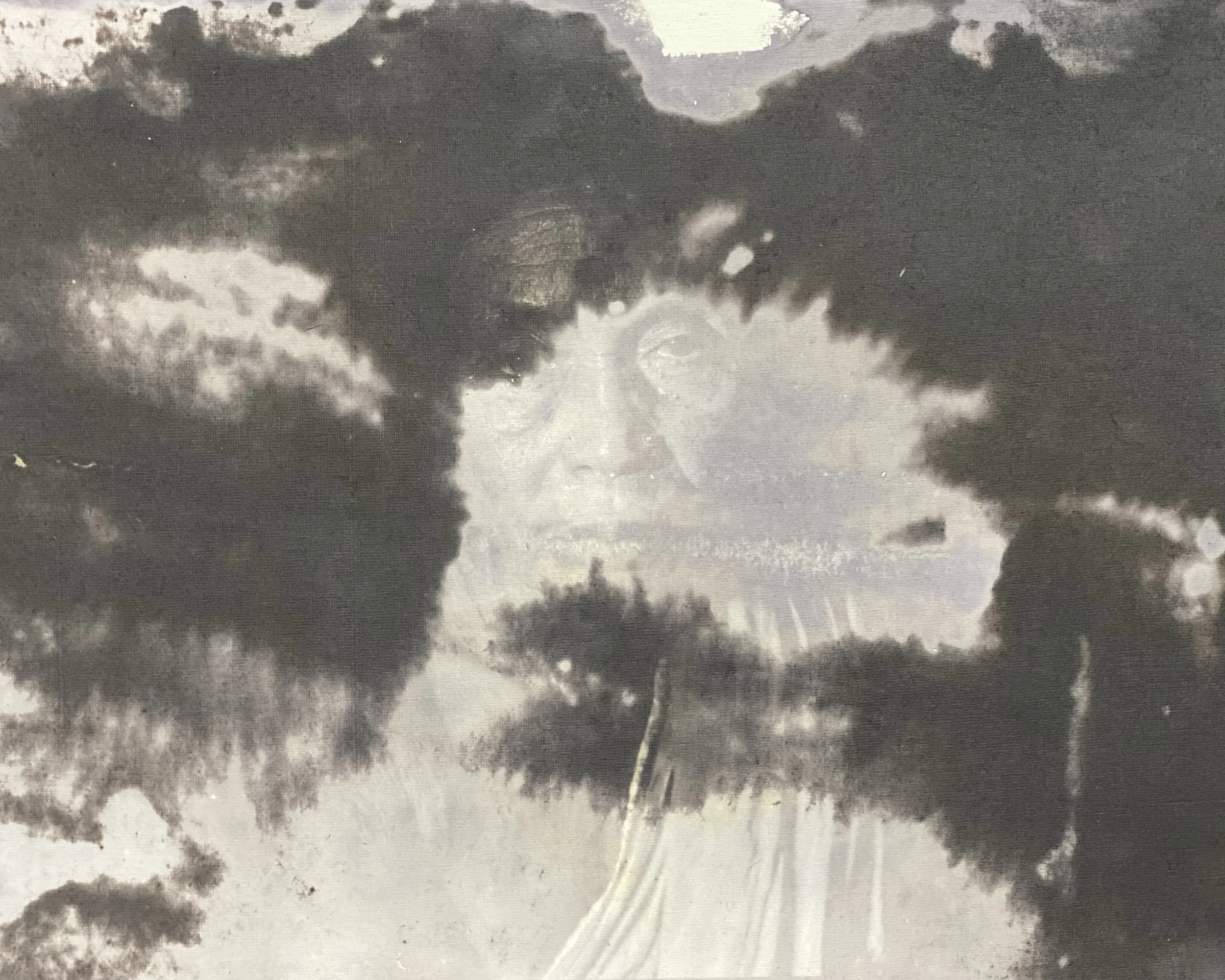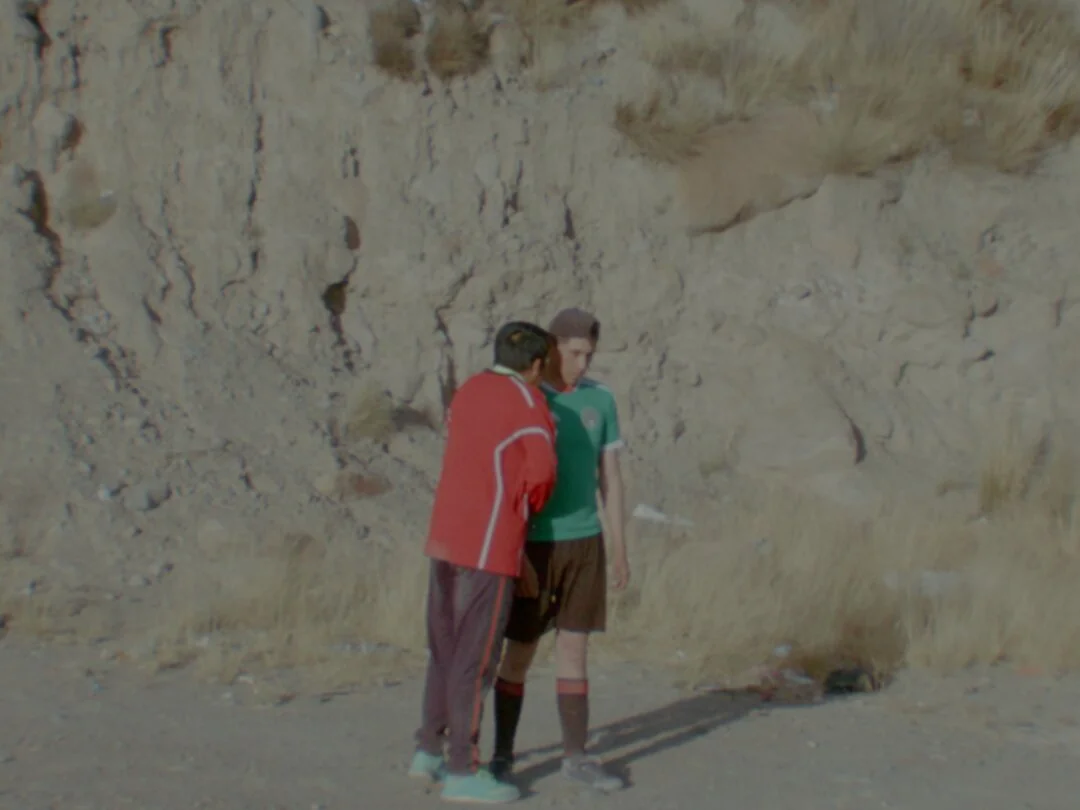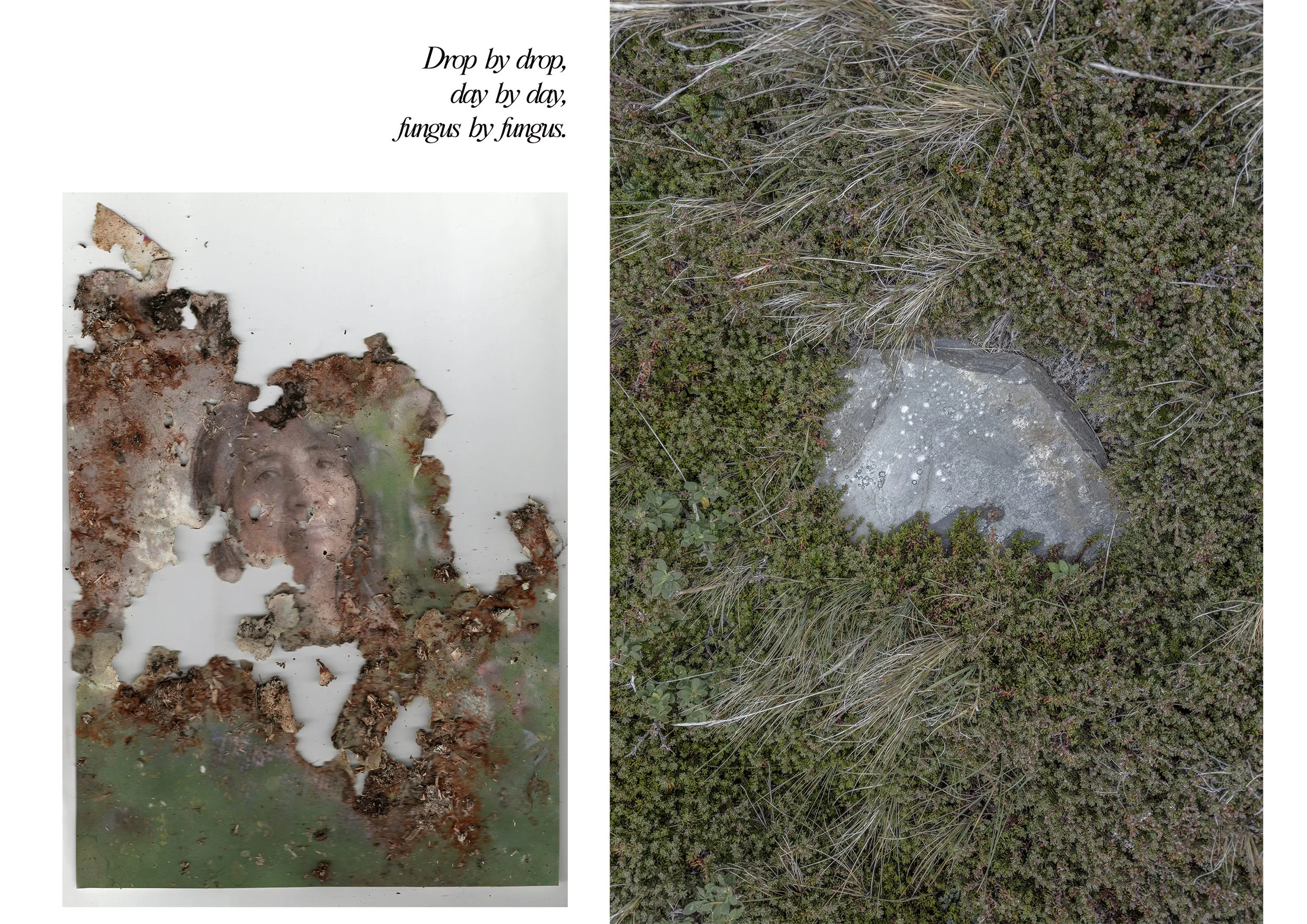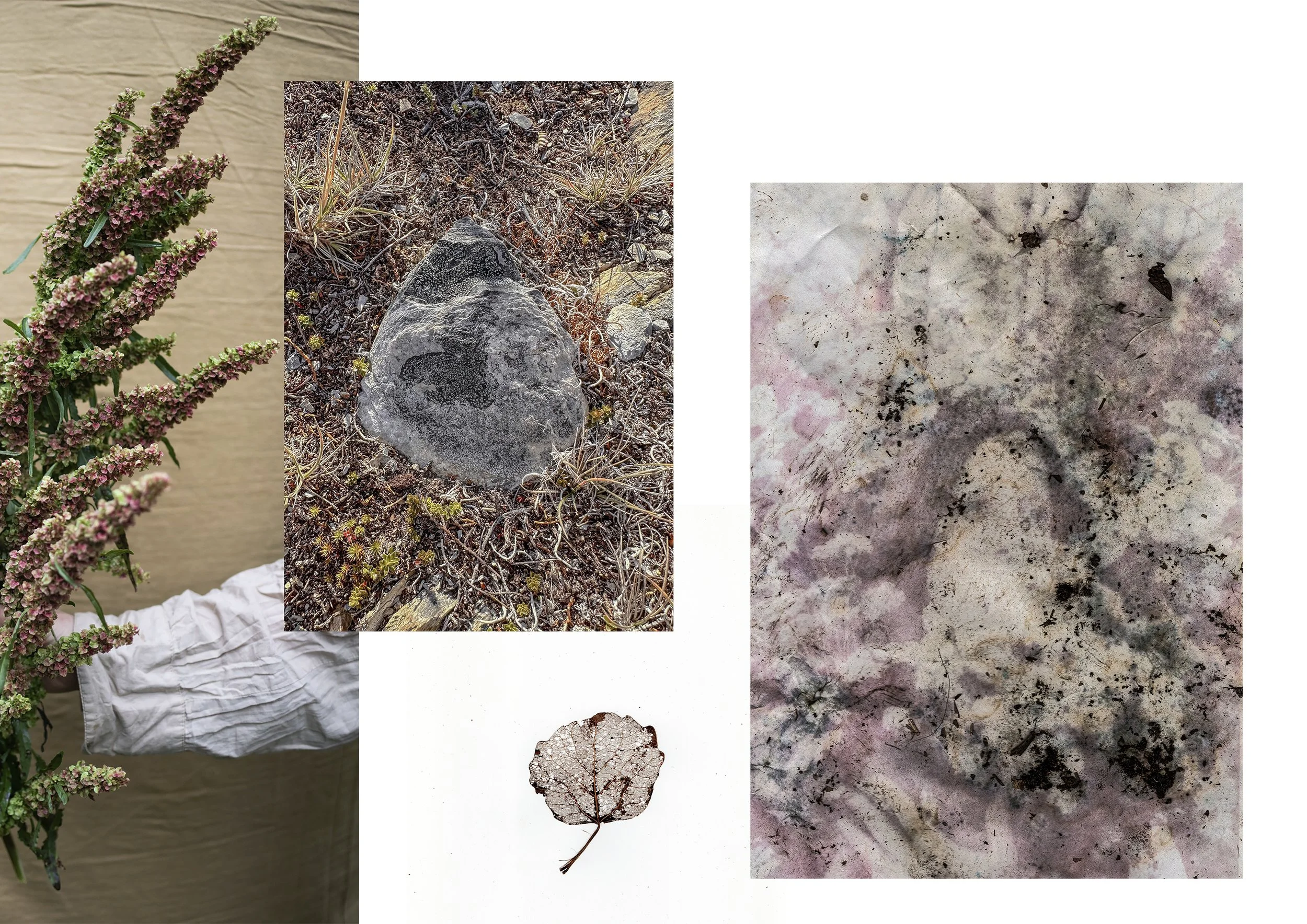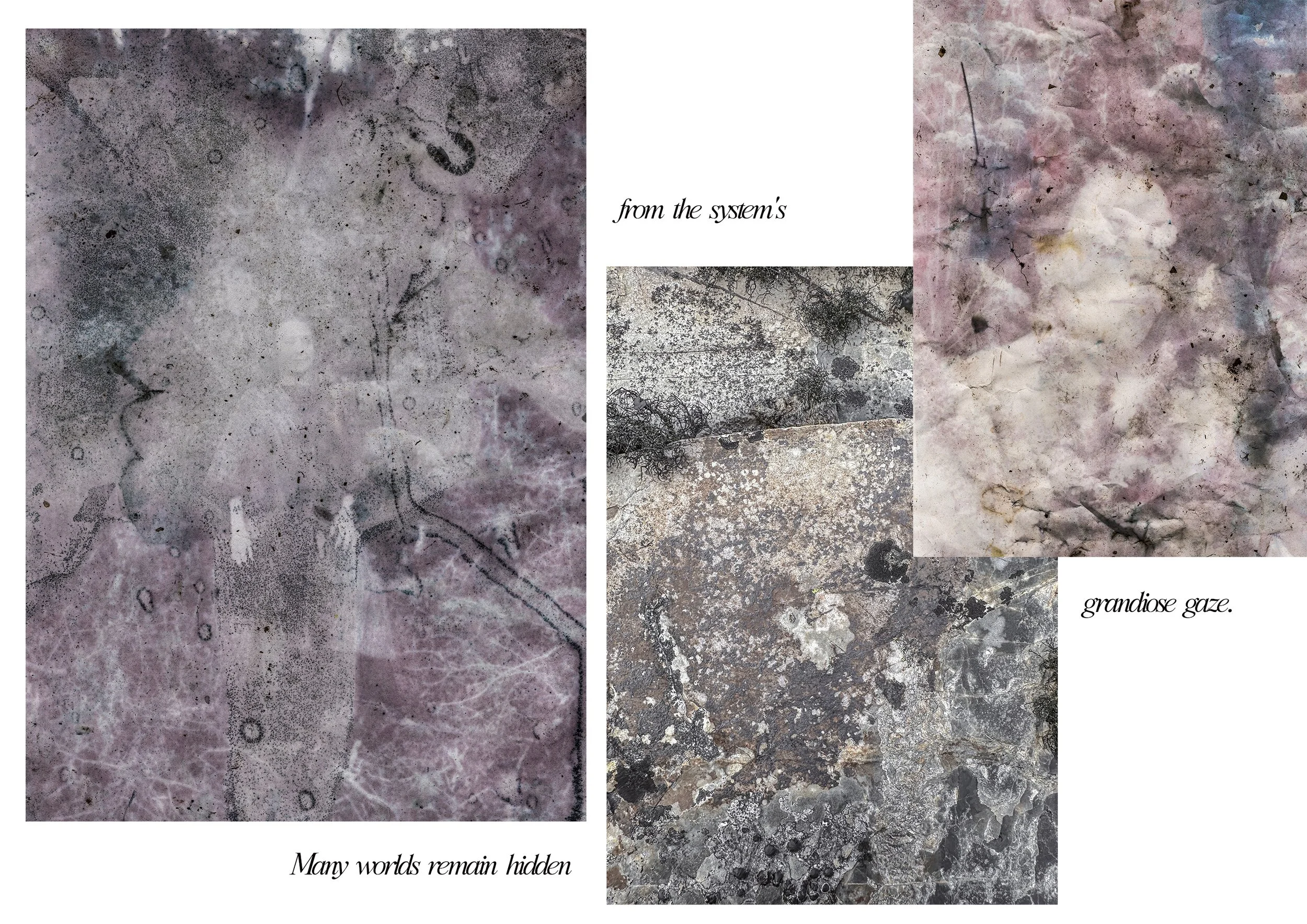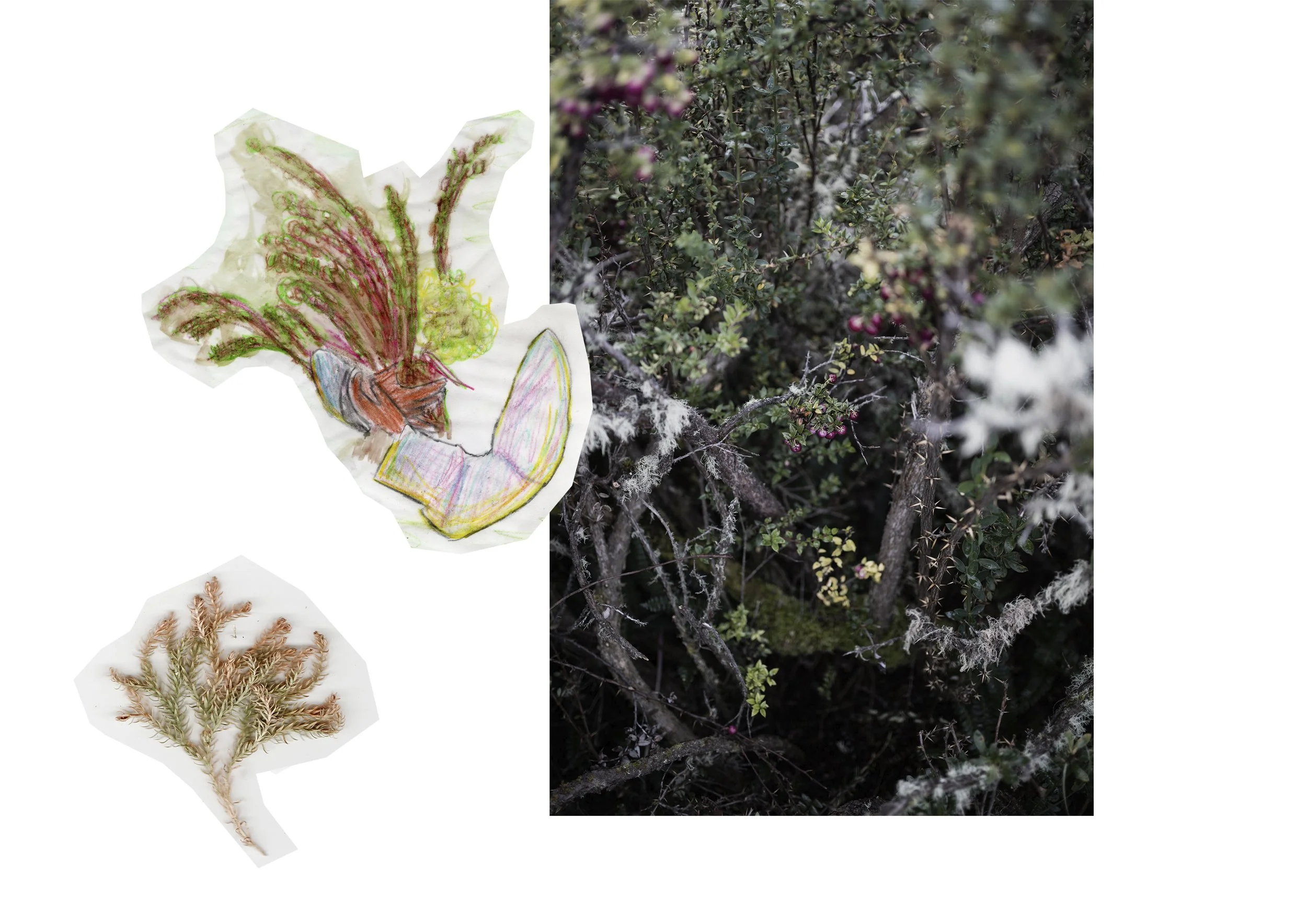Heat Fellowship Project Spotlights
Gayatri Ganju
Our 2023-2024 Heat Fellowship focused on photography that expands discourse about heat and climate crisis, supporting nine photographers working on topics including climate-based migration, pollution-driven health disparities, and collective memory and resilience in the face of ecological disaster. As increasingly urgent global crises demand new paradigms for making and sharing images, this fellowship emphasized experimental approaches that reimagine what a critical and ecological photographic practice might look like. The resulting projects not only delve into root causes of threats to our planet, but also offer potential pathways towards recovery.
The fellowship is part of our Photography Expanded program focused on expanding the parameters of documentary photography and exploring creative models for narrative change. This year’s fellowship included two workshops in Amman, Jordan, produced in partnership with Darkroom Amman and MMAG Foundation, and working closely with Jordan-based Magnum Foundation alums Lina Khalid and Nadia Bseiso.
Building on their January workshop exploring the relationship between photography and ecology and engaging with climate-related projects from the region, fellows spent the June workshop working on experimental installations with mentors Eric Gottesman, Nandita Raman, and Newsha Tavakolian, and Magnum Foundation president Susan Meiselas. The resulting pop-up exhibition was presented at the MMAG Foundation to invited guests from the Jordanian artistic community.
See project highlights below!
Miora Rajaonary | The Common Ground
Taking the form of a love letter to my son, this project documents how the most remote communities of my native island of Madagascar are trying new approaches to food production that are more thoughtful of nature in light of climate and environmental changes. In communities living in the desert, on the coast, and in the forest, people are creating solutions to produce food by observing nature and figuring out how to work with it, rather than against it.
I hope this body of work will inspire more people to believe that a change of paradigm is necessary and possible in the way we engage with nature.
A portrait of Michel Gaston, a young Vezo fisherman, in the street of Andavadoaka.
A resident of the village of Ambodiforaha on the border of the Masoala National Park (MNP) in North Eastern Madagascar. The MNPis the shelter of the country's last primary forests. Located at the end of a peninsula in the north-east of Madagascar, the park can be reached by boat or by a four-day walk from the nearest town, Maroantsetra.
A fishing net hangs from the branches of a tree in a courtyard in Amdavadoaka, in Southwestern Madagascar. Legend has it that the Vezo are all descended from the union of a single ancestor and a mermaid. After having a child with this man, the mermaid went back to the sea. In return for this abandonment, she promised the fisherman to bring all the fish back to him, and asked that all her son's descendants remain on the coast.
A lone zebu feeds itself in a forest in North Eastern Madagascar, Zebus are a scarcity in the area and kept alive most of the time to be used as a means of transport and a work tool in the fields. It is killed only during special occasions, therefore locals have to find consistent alternative source of protein.
A card from a set designed by American researcher Cortni Borgerson to raise awareness around the breeding of sakondry in Masoala among the locals. To curb the destruction of biodiversity while also feed themselves, the villagers of Ambodiforaha decided to start the farming of an indigenous insect, the sakondry, an environment-friendly alternative source of protein.
Hear from the artist:
“One thing I’d like to take back from the communities of my country to the world is let’s be resilient together and let’s adapt.”
María Valqui | Water Rope
On the banks of the Amazon River, in Loreto, Peru, is the town of Tamshiyacu whose name means liana or aquatic rope. Since 2012, Tamshiyacu has been prey to the deforestation of nearly 2,000 hectares of primary tropical forest that have been converted into cocoa plantations by foreign capital.
This is the story of my family, our origins in Tamshiyacu and how the collective memory and territory are threatened by the progressive destruction of the Amazon jungle. I approach the local imaginaries, the degradation of the family archives, and the possible loss of collective memory related to the destruction of the territory.
What happens to memory when the territory that embraces it is in danger? The earth, like the body, speaks in codes that I try to interpret.
Hear from the artist:
“I’m trying to explore this story from the intimacy of my family and what happens with the territory, but also with their minds, the spirits, and their bodies in this process...the invisible consequences of all this climate change.”
Gayatri Ganju | The Pregnant Tree
The shola (native) forests of the Nilgiri mountains in South India, to which the Kurumbas belong, are fast disappearing. With this, whole villages have been pushed out of the forest diminishing their access to food, water, medicine, worship, livelihood and an entire way of life. There is also now less time for telling stories. Like the shola, these too are fast disappearing.
Over the past eight years, I have been going back to different villages to try to find these stories. These stories are powerful totems for who the Kurumba are. A way to remember and protect their place in the world. Working through these stories, with children and elders between three villages, we are making up a story of what the future of the forest might be.
Hear from the artist:
“Being able to spend this time looking at, and playing with the work, being able to go back and make more images, gave me a sense of vision for what had to be done. I don’t think my work changed but it definitely grew - into an object, into a story that can be shared, into something important.”
Hashem Shakeri | An Elegy for the Death of Hamun
As the largest province of Iran, Sistan and Baluchestan is located in the southeast of the country and shares borders with Afghanistan and Pakistan. Once a forest in the distant past and with a history of over 5,000 years, it used to be a great source of crops in the country. Now, the province is facing rapid climate change, which has turned this vast region into an infertile desert. Drought, unemployment, and hopelessness have made over one fourth of the population migrate in recent years.
Even during droughts, it is said that a small amount of water still flows from the mountains. In dry riverbeds, garments are left in a quest for purification and the fulfillment of desire. As they cake with dirt from years of drought and sand storms, they await the sacred waters that will bestow upon them a new life, brimming with renewed hope and vitality. This ancient spring, thousands of years old, carries within its waters the secrets and sorrows, the wishes and heartaches, of countless souls across the ages. A people who had a magnificent past, waiting for it to reappear again.
Hear from the artist:
“In the process of this program, from the beginning, I promised myself to remain completely open and use this opportunity to gain experience. So I decided to challenge myself and create and learn from this experimental process through trial and error. ”
Farhana Satu | Water/Life
I come from the southwestern region of Bangladesh, a low-lying coastal area where the largest mangrove forest of the world, Sundarban, exists. Climate experts predict that by 2050, rising sea levels will submerge 17 percent of Bangladesh’s land, and 25 percent of the land of Bagerhat district will be submerged. Which is my village home.
Here, salinity is having a huge impact on people’s health, especially women. 1 in 100 women have had their uterus surgically removed due to chronic bleeding, infection, or tumors. A few months ago I was diagnosed with a uterus tumor too. Being in such physical and mental condition, I feel so connected with the women of my hometown. As an artist it is my duty to talk about how people of my home town are persistently combating this crisis and fighting to exist.
Through black and white photographs, I bring attention to my hometown as it faces being submerged. I also use cyanotype and salt prints with excess amounts of salt so that the images lose their detail, representing how the women of my hometown are losing their lives. Earlier this year, half of these prints were lost to a cyclone, and the remaining were damaged by the floods. The few I managed to save are presented here.
Hear from the artist:
“I really wanted to bring [these women’s] inner beauty in my photos instead of showing them how vulnerable, and how affected, how victim they are.”
River Claure | Instructions and Possibilities to Scare a Mountain
Instructions and Possibilities to Scare a Mountain is an audiovisual exercise in collaboration with the inhabitants and former miners of Cerro Rico de Potosi in the Bolivian Andes. Since its discovery during the colonial period in America, the Cerro Rico de Potosi has been considered to be the richest source of silver in the history of humankind. Since then, the land has been exhausted, and now only the populations that were built around the industry and the promises of modernity remain.
The importance of this mountain can not only be measured in economic terms; culturally, it has been fundamental for the development of the 'history' of the West. Theorists describe this mountain as representing the beginning of the modern principles of accumulation and exploitation. Now, after more than five hundred years, the Cerro Rico de Potosi is starting to collapse, and maybe, just maybe, it needs a little scare to finish falling. Here, at the foot of this mountain, where some say that capitalism was born, we set out to scare everything it represents. Each and every one of those ghosts that come from the colony.
Hear from the artist:
“My project is about the end of the world. It’s a story around how these exhausted territories can be an analogy about the end of the world in the world to come.”
José Luis Arroyo-Robles | A stain does not hide the table
This project is based in the territory where the monarch butterfly lands in Michoacan, Mexico. It combines an archive of slide film developed by my father in the 90’s during his work at the Monarch Butterfly Reserve with a family album created by my mother around the same time and in the same region. In this area, illegal logging, rising tourism, and the expansion of crops has threatened and transformed the landscape for over two decades.
Here, I establish a conversation with my family history in relation to the history of the transforming territory where it began, and my fear of losing both. Using my parents’ archives, animation, and sculptures of this altered landscape, I seek to return the care that this landscape has given me, and in doing so build a relationship that moves beyond nostalgia for the past.
Hear from the artist:
“I think it’s very important for us as artists and photographers who are involved in different communities, to really work from a very sensitive way as instead of just extracting what in the first place took us to those places.”
Mahmoud Khattab | There Was a Valley Here Once
Chasing a nation’s dream of building new cities in Egypt’s desert, this project is a reminiscence of how our lands looked in a distant past. I remember a valley I grew up by that is slowly vanishing. It’s becoming a flatbed to new residential compounds and shopping malls. From its hidden layers, the valley gave me stone relics of its past as a reminder, a witness of how fast millennia and epochs of slow breaths will change into a memory.
Through photographs and terrain samples that I have taken over the years, I narrate a story of the disappearance of desert ecosystems, their flora and their fauna, as they give way to the promises of a fast growing nation.
Hear from the artist:
“The most powerful tool I have learned is to trust my personal voice in stories. And sometimes, we need to step back from this conventional way of telling a story in a documentary style and find our personal position and relationship to that story. If we relate to it, our voice will be the strongest.”
Luján Agusti | Someday We Will Merge Into the Landscape
Those with strong knowledge, connected to the wisdom of plants and herbs, the fertility of the earth and the body, were silenced with the colonization processes. Much of their traditions and languages began to be suppressed, to build a “morally correct” society.
This project began with me photographing people of Ushuaia, South Argentina, who live in connection with the land and its provisions of food, medicine, and shelter. Those who have a bond with the world of herbs, animals, and plants. The ones that keep ancestral knowledge alive: the witches, the alchemists.
I planted the portraits in the soil: to leave the world of ideas and return to the land. Once, when I went to see how those images were progressing, I discovered that a fungus had started to grow on some of them. Where I expected a green and flowering image, I found the world of fungi advancing on the other side of my story. I understood that the real process was transformation.
Hear from the artist:
“We are not something apart from nature that we need to separate from us and take care of...we need to think of both us the same thing and and learn to inhabit together.”
The Photography Expanded Fellowship is made possible by the support of the National Endowment for the Arts, the Rosenthal Family Foundation, the William Talbott Hillman Foundation, and the Geneviève McMillan-Reba Stewart Foundation.



